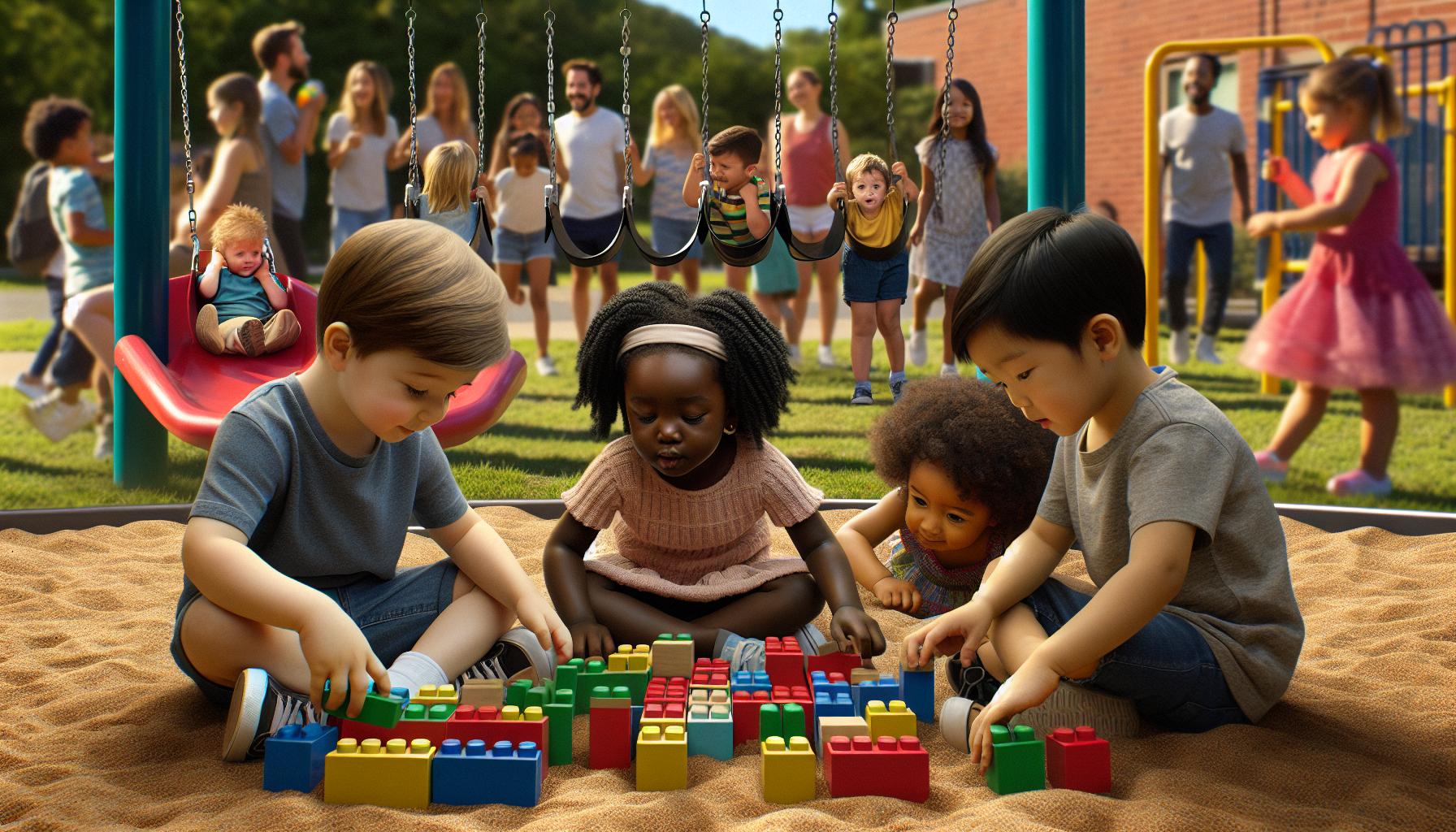Understanding child growth and development is crucial for parents, educators, and anyone involved in nurturing young minds. As I delve into the principles that govern this fascinating journey, I often encounter various statements that either support or contradict these foundational ideas. It’s essential to distinguish between what truly applies and what doesn’t.
In this exploration, I’ll highlight key principles of child development while pinpointing which statements fall outside these established guidelines. By clarifying these misconceptions, I aim to provide valuable insights that can enhance our approach to fostering healthy development in children. Let’s unravel the complexities together and ensure we’re all on the right path.
Key Takeaways
- Importance of Understanding: Grasping the principles of child growth and development is essential for effective parenting and education.
- Physical and Cognitive Milestones: Child growth encompasses physical milestones (like crawling and walking) and cognitive developments (such as problem-solving and memory).
- Influences on Growth: Proper nutrition and genetics significantly impact a child’s growth patterns and overall development.
- Individual Differences: Child development is non-linear, and individual differences must be acknowledged to set realistic expectations.
- Myth-Busting: Many misconceptions exist, including the belief in uniform growth rates and the misunderstanding of developmental stages; clarifying these can facilitate better support.
- Critical Thinking Required: Evaluating statements about child growth critically helps differentiate between accurate principles and common inaccuracies.
Which of the Following Statements Does Not Apply to the Principles of Child Growth And Development?
Understanding child growth and development involves recognizing the key principles that guide this process. Growth refers to the physical changes in a child, while development includes cognitive, emotional, and social advancements. Both aspects contribute significantly to a child’s overall well-being.
Key Principles of Child Growth
- Physical Milestones: Children progress through specific physical milestones, such as crawling, walking, and running. These milestones occur at varying rates among individuals.
- Nutritional Impact: Proper nutrition directly influences growth. Essential nutrients support physical development, cognitive function, and overall health.
- Genetic Factors: Genetics play a crucial role in determining a child’s growth patterns. Family history often offers insight into expected growth trajectories.
Key Principles of Child Development
- Cognitive Development: A child’s cognitive abilities, such as problem-solving and memory, develop in stages. Each stage builds on prior knowledge and experiences.
- Emotional Growth: Emotional regulation and social skills develop as children interact with caregivers and peers. These experiences shape their ability to handle feelings.
- Social Learning: Social environments, including family and community, significantly influence a child’s development. Positive interactions cultivate essential life skills.
- Linear Progression: Many believe development occurs in a straight line; however, it often follows a non-linear pathway. Children may exhibit skills unpredictably.
- Age-Based Expectations: Assumptions about development based solely on age can misguide parents. Individual differences must be considered when evaluating progress.
- Critical Periods: Some think growth follows strict critical periods. While some stages require timely interventions, flexibility exists in developmental milestones.
Recognizing these principles aids in fostering better environments for children, minimizing misconceptions, and enhancing understanding of their unique growth journeys.
Key Principles of Child Growth

Understanding the key principles of child growth provides a foundation for nurturing development in early years. I’ll detail the main aspects of both physical and cognitive growth.
Physical Development
Physical development encompasses the observable changes in the body’s size, shape, and capabilities. It involves milestones such as walking, running, and fine motor skills like grasping and drawing. Growth patterns vary significantly among children; growth spurts typically occur during infancy and adolescence. Nutrition plays a crucial role; balanced diets rich in vitamins and minerals support optimal growth. Genetics also influence physical traits, determining aspects like height and body composition. Monitoring growth through regular check-ups helps identify any potential health concerns.
Cognitive Development
Cognitive development relates to the progression of thinking, learning, and problem-solving abilities. It occurs in identifiable stages, as articulated in Jean Piaget’s theory. Children develop skills such as memory, attention, and reasoning over time. Enriched environments foster cognitive skills; activities like reading, puzzles, and creative play stimulate brain development. Social interactions enhance cognitive growth by enabling children to share ideas and learn from peers. Understanding these stages allows caregivers to provide appropriate challenges that encourage cognitive advancement.
Common Misconceptions

Many misconceptions exist regarding child growth and development. Understanding these misconceptions helps in nurturing a child’s unique development journey.
Misunderstanding Growth Stages
Many believe that child growth occurs in a strictly linear progression. Growth stages aren’t universally applicable; children develop at varied paces. Factors like nutrition, genetics, and environment impact growth rates. For instance, while some children walk at 12 months, others may take 15 months. Recognizing that each child’s journey differs promotes realistic expectations and better support from caregivers.
Overlooking Individual Differences
Overlooking individual differences can lead to misconceptions about normative behaviors. Children possess unique traits, skills, and temperaments. While certain developmental milestones provide general guidelines, individual variations are significant. For example, one child might excel in language by age two, while another might demonstrate exceptional spatial skills later. Acknowledging these differences ensures tailored approaches that effectively support each child’s development.
Evaluating Statements

Evaluating the accuracy of statements regarding child growth and development is essential for understanding effective practices and nurturing environments. By clarifying which statements align with recognized principles, I can better support children’s growth and development.
Statement Analysis
Statement analysis involves examining each assertion made about child growth and development. Statements reflecting acknowledged theories, such as those from prominent figures like Jean Piaget or Erik Erikson, generally provide accurate insights. For instance, concepts about developmental stages and the importance of an enriched environment support proven practices. Conversely, assertions that suggest a uniform growth rate, regardless of individual differences or external influences, may lack accuracy. By dissecting each statement, I can ascertain its relevance to established principles of growth and development.
Identifying Inaccuracies
Identifying inaccuracies in statements about child growth and development requires careful scrutiny. Statements claiming that all children achieve specific milestones at the same age misrepresent the reality of development. Similarly, notions suggesting that intelligence solely derives from genetics overlook the significant impact of environmental factors and learning opportunities. Misconceptions, such as believing that emotional development is secondary to cognitive growth, also highlight flawed understandings. By pinpointing these inaccuracies, I can better advocate for approaches that respect children’s unique developmental trajectories, ensuring each child receives the support needed for optimal growth.
Principles of Child Growth and Development
Recognizing the principles of child growth and development is essential for anyone involved in nurturing young minds. I’ve seen firsthand how understanding these concepts can lead to better support for children as they navigate their unique growth journeys.
By identifying misconceptions and focusing on individual differences, we can create environments that truly foster growth. It’s crucial to challenge inaccurate statements and embrace the complexity of development. This approach not only enhances our understanding but also empowers us to provide the right tools and support for each child’s unique path.